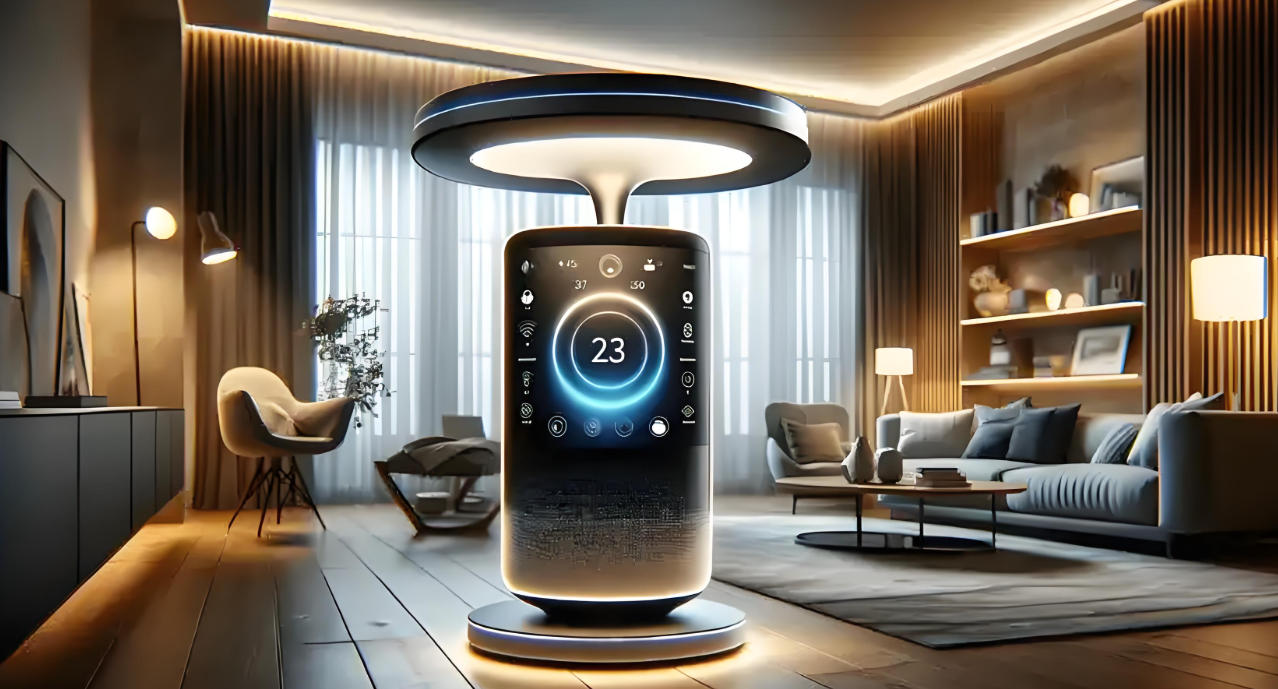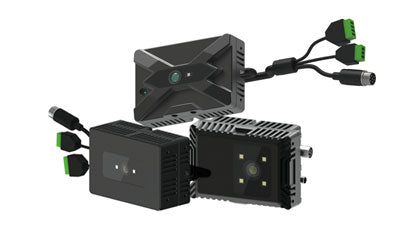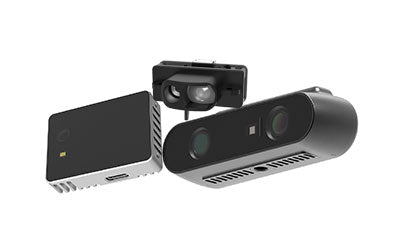TOF and Smart Home: From Touch Control to Contactless Interaction

How can I control smart home devices in the kitchen or living room without touching anything?
With the rapid development of smart home technology, users now demand more convenient and intuitive ways to control their appliances. From early remote controls and panel buttons to modern voice recognition and mobile app operation, interaction methods have constantly evolved. However, challenges such as complicated operations, high error rates, and limited scenarios still exist. Achieving truly natural, efficient, and secure interaction has become a key focus in smart home development. The introduction of TOF (Time-of-Flight) (https://en.wikipedia.org)technology brings a revolutionary shift from 'touch control' to contactless interaction.
What is Gesture Control?
Gesture control means controlling devices or systems by recognizing and interpreting human body movements or hand gestures, without physically touching the device or using traditional input methods such as buttons, remotes, or touchscreens.
In simple terms, users can wave, point, or perform specific gestures, and the device will respond accordingly—for example, turning lights on/off, adjusting volume, controlling curtains, or operating other smart appliances.
Key features include:
-
Contactless operation: No need to touch the device.
-
Natural interaction: Intuitive gestures that are easy to understand.
-
Efficient and convenient: Especially useful when hands are occupied or the environment makes touch operation difficult.
For example, in a smart kitchen, a user can wave their hand near the stove to turn on the light or adjust the exhaust fan speed—this is a typical application of gesture control.

What is TOF (Time-of-Flight) Technology?
TOF (Time-of-Flight) technology, also called flight-time distance measurement, is a high-precision sensing method that calculates the distance and spatial information of objects by measuring the time it takes for light or sound to travel to the object and back. TOF technology is widely used in smart homes, autonomous vehicles, AR/VR, and industrial inspection.
Core principle:
-
A TOF sensor emits short pulses of light (usually infrared) toward the target object.
-
The light reflects off the object and returns to the sensor.
-
The system calculates the precise distance based on the round-trip time of the light pulse.
-
By combining multiple distance measurements with algorithms, a high-precision 3D spatial model can be generated, enabling depth perception and spatial awareness.
Main applications of TOF technology:
-
Smart homes: Enables gesture recognition, contactless control, and automation of lights and appliances. For example, waving to control lights, adjusting air conditioning temperature, or opening curtains.
-
Smart security: Accurately detects human shapes, reducing false alarms and improving safety in access control and surveillance systems.
-
AR/VR and 3D scanning: TOF cameras quickly generate 3D models of environments or objects for virtual reality, augmented reality, or indoor mapping.
-
Industrial inspection and robot navigation: TOF helps robots avoid obstacles, plan paths, and perform precise distance measurement and object recognition.
Advantages of TOF technology:
-
High-precision measurement, with errors as low as millimeters.
-
Strong resistance to ambient light interference, capable of working in low-light or dark conditions.
-
Structured data output, suitable for AI-based gesture recognition, motion capture, and smart control.
-
Privacy-friendly: TOF collects depth point cloud data rather than full-color video, protecting users’ privacy.
TOF sensors, TOF cameras, and TOF depth-sensing technology are essential core technologies for smart homes, gesture control, and contactless interaction, driving the future of intelligent living.
1. Current Status and Limitations of Smart Home Interaction
With the development of IoT and AI, smart homes have become increasingly common. However, interaction with home devices still faces notable limitations, mainly in the following areas:
-
Touch/Remote Control:
Early interaction relied on physical panels and remotes. Users needed to walk to the switch or find the remote to operate devices. While simple and low-cost, this method offers a traditional experience that doesn’t fully realize the “smart” potential. -
App/Mobile Control:
Most smart home manufacturers offer mobile apps for remote control and scene automation. In practice, users must unlock their phone, open the app, find the corresponding device, and operate it. This process is cumbersome, especially for high-frequency actions such as turning lights on/off or adjusting temperature, resulting in low efficiency and engagement. -
Voice Control:
Popular in recent years with assistants like XiaoAI, Tmall Genie, and Amazon Alexa. Voice control frees hands and improves convenience but still has limitations:-
High error rates: Misinterpretation of commands can occur.
-
Noise interference: Cooking sounds, TV noise, or multiple people speaking simultaneously reduce recognition accuracy.
-
Dialect recognition issues: Accents and regional dialects may not be well supported, further impacting experience.
-
In complex home environments, these issues are amplified. For example, a user in the kitchen may want to control lights by voice while their hands are occupied, but the device may fail to respond due to ambient noise. During family gatherings, multiple voices may confuse the system, leading to incorrect operations. Such fragmented experiences undermine user trust in smart home interactions.
Although smart home interaction methods have evolved from traditional to intelligent, stability, accuracy, and immersive user experience remain major challenges.
2. TOF Empowering Contactless Control
Faced with the limitations of voice and touch control, TOF (Time-of-Flight) technology provides a breakthrough for smart home interaction. By emitting light pulses and calculating return times, TOF sensors generate high-precision 3D sensing data in real time. Compared with traditional infrared or standard camera-based methods, TOF offers higher anti-interference capability and more accurate recognition, supporting natural and stable contactless interaction.
Precise Gesture Control
With TOF’s depth sensing and 3D detection, smart home systems can quickly recognize hand movements, spatial positions, and motion trajectories. For example:
-
Waving a hand to turn lights on or off
-
Moving a hand up/down to adjust TV or audio volume
-
Gesturing to open or close curtains
-
Selecting AC modes (cooling, heating, fan speed) with a simple hand movement
The entire process requires no physical touch or voice commands, reducing learning costs and providing a more convenient and efficient experience.
Advantages in Complex Environments
Traditional touch and voice control often perform poorly in specific scenarios:
-
Touch limitations: Wet, greasy, or soiled hands make panel operation inconvenient and unhygienic.
-
Voice limitations: Kitchen noise, bathroom echo, or multiple people speaking simultaneously reduces recognition accuracy.
TOF sensors rely on the flight time of light pulses rather than sound or conventional visual images, allowing stable recognition even in smoky kitchens, steamy bathrooms, dim lighting, or complete darkness. Whether in the kitchen, bathroom, or bedroom at night, TOF ensures consistent and reliable interaction.

Natural Human-Machine Interaction
Unlike traditional command-based operations, TOF-enabled contactless interaction is much closer to human intuition. Users no longer need to memorize complex voice commands or perform multiple steps on control panels; a simple natural gesture is enough to operate devices.
This “what you see is what you control” approach allows smart home devices to truly understand the user:
-
The system can detect subtle differences in gestures, enabling richer and more versatile control commands.
-
Interaction no longer relies on extra tools, blurring the boundary between users and their environment.
-
In the era of multi-modal integration, gesture control can be combined with voice commands, scene recognition, and other input methods to create a fully immersive interactive experience.
Future Value of Contactless Interaction
TOF-powered contactless interaction not only overcomes the limitations of traditional methods, significantly enhancing usability and stability, but also lays the technical foundation for immersive, multi-modal interactions. With further integration of TOF, AI algorithms, and IoT ecosystems, smart homes will evolve from simple 'control tools' into intelligent living companions capable of understanding user intentions.
3. Security and Privacy Protection
In the development of smart homes, data security and privacy protection remain a top concern for users. As devices proliferate and connectivity increases, voice, video, and behavioral data in the home could become potential privacy risks. Therefore, a secure and trustworthy interaction method is essential for widespread adoption.
Compared with traditional camera-based recognition systems, TOF technology offers inherent privacy advantages:
-
Local data processing reduces cloud dependency
TOF sensors primarily capture depth and spatial information rather than high-resolution images. This lightweight, structured data can be processed directly on the device, avoiding large-scale cloud transmission. This not only ensures real-time interaction but also greatly reduces the risk of data being intercepted or leaked. -
No video imaging, protecting home privacy
Unlike cameras, TOF outputs point cloud or depth map data instead of full-color video. Users do not need to worry about home layout, residents’ faces, or sensitive details being recorded or exposed. This approach naturally eliminates the 'surveillance feeling,' enhancing user comfort while maintaining functionality. -
Privacy-friendly interaction experience
By capturing depth rather than images, TOF strikes a balance between privacy and intelligent interaction. Users can enjoy natural, smooth gesture control without feeling constantly monitored. For privacy-conscious groups—families with children or elderly, or users sensitive to cybersecurity—TOF’s advantages are particularly significant.
In short, TOF smart homes not only innovate in interaction methods but also set a new benchmark for user privacy protection, combining security and convenience to build user trust.
4. Smart Ecosystem Integration
TOF technology does not exist in isolation. It is deeply integrated with IoT (Internet of Things) and AI (Artificial Intelligence), forming the core perception layer in smart home ecosystems. By capturing high-precision 3D spatial data in real time, TOF provides richer inputs for AI and more natural interaction interfaces for IoT devices.
-
Huawei Smart Screens and Full-Home Intelligence
Some Huawei smart screens are equipped with TOF sensors, enabling contactless gesture control for channel switching, volume adjustment, or page navigation. TOF also automatically adjusts brightness and sound based on the user’s distance from the screen. Coupled with Huawei’s full-home IoT ecosystem, TOF-captured gestures can further link to lights, curtains, and speakers, achieving scene-based unified control. -
Samsung Smart Appliances’ Contactless Upgrade
Samsung integrates TOF and 3D sensing in refrigerators, air conditioners, and other appliances. Users can operate devices even with wet or greasy hands—for instance, opening a fridge door or adjusting AC modes with simple hand gestures. This contactless interaction improves convenience while meeting higher hygiene and health standards, especially relevant in the post-pandemic era. -
IoT + AI Ecosystem Synergy
TOF’s true potential emerges when combined with IoT and AI. Depth data captured by TOF can more accurately interpret user intentions and drive coordinated IoT device actions:-
When a user enters the living room, TOF sensors detect movement, lights automatically turn on, the air conditioner adjusts airflow and temperature according to body position and preference, and background music plays, creating an immersive scene experience.
-
In security scenarios, TOF combined with AI can recognize human silhouettes and movements, reducing false alarms while linking with monitoring systems and smart locks.
-
For health monitoring, TOF works with wearable devices or sleep trackers to enable contactless vital tracking, helping families build comprehensive health profiles.
-
This cross-device, multi-scenario integration is pushing smart homes from isolated functionality toward systematic, intelligent experiences. TOF is not just a sensor—it is the spatial perception hub of the smart home ecosystem, transforming homes from 'smart appliances' into intelligent spaces.

5. Future Trends: From Smart Devices to Intelligent Spaces
As TOF technology integrates further with AI and IoT, future smart homes will move beyond reliance on single commands or pre-set scenes, toward proactive, space-level perception and interaction. This shift represents not only a change in control methods but also a redefinition of lifestyle.
-
Whole-home spatial awareness for digital twin homes
By deploying multiple TOF sensors, homes can generate real-time 3D models, precisely tracking positions, postures, and movements of occupants. Lights adjust brightness and color temperature based on movement; air conditioners deliver targeted airflow to avoid energy waste. TOF-based spatial awareness is driving smart homes toward digital twin environments. -
Behavior prediction and habit learning
AI can analyze TOF-collected spatial data to understand user routines. For example, when the system detects bedtime preparation, it can dim lights, close curtains slowly, adjust AC to silent energy-saving mode, and even play sleep-aiding music. Smart homes evolve from passive response to active prediction, embedding technology naturally into daily life. -
From gesture control to contactless interaction
Currently, TOF is mainly used for gesture recognition, but future smart homes will move toward contactless, intuitive interaction: users don’t need explicit commands, and systems adjust based on environment and needs. For example, when detecting excessive kitchen smoke, the range hood automatically activates; hallway lights softly illuminate when an elderly person gets up at night. This human-centered approach allows technology to blend seamlessly into the environment. -
Expanded cross-domain applications
TOF will not be limited to comfort; it will play a greater role in smart security, elderly care, child safety, and immersive entertainment. It can detect falls, provide health monitoring for seniors, or integrate with VR/AR devices to create more realistic immersive experiences.
The smart home of the future will be a warm, intelligent space: perceptive of user needs, responsive at the right time, providing truly natural and contactless interactions. TOF technology is the core sensing engine enabling this vision.
Conclusion
TOF smart home technology represents a new leap in interaction. With advantages such as gesture control, contactless operation, and 3D sensing, TOF not only addresses limitations of traditional voice and touch controls but also brings unique value in privacy protection, whole-home awareness, and ecosystem integration. As AI and IoT continue to converge, smart homes will evolve from 'humans searching for devices' to devices understanding humans, entering a new era of intelligent, comfortable, safe, and contactless interaction.
Synexens 3D Of RGBD ToF Depth Sensor_CS30
Our professional technical team specializing in 3D camera ranging is ready to assist you at any time. Whether you encounter any issues with your TOF camera after purchase or need clarification on TOF technology, feel free to contact us anytime. We are committed to providing high-quality technical after-sales service and user experience, ensuring your peace of mind in both shopping and using our products.
-
Publicado en
CS30



